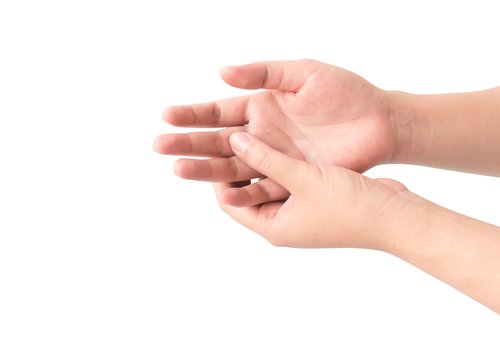Levels of Protein for Skin Hydration, Wound Healing Reduced in Systemic Sclerosis Patients, Study Finds
Written by |

Skin levels of aquaporin 3 (AQP3), a protein which promotes skin hydration and wound healing, are reduced in the cells of patients with systemic sclerosis (SSc), according to a new study.
The study, “Downregulation of Aquaporin3 in Systemic Sclerosis Dermal Fibroblasts,” appeared in the Iranian Journal of Allergy, Asthma and Immunology.
The research was led by Farhad Gharibdoost, MD, from the Rheumatology Research Center, Tehran University of Medical Sciences in Tehran, Iran.
SSc is typically characterized by dryness and thickening of the skin and internal organs, including the lungs, heart, and digestive system. Inflammation, autoimmunity, and vascular damage are among the pathogenic changes in SSc.
Fibroblasts are the main active cells of connective tissue and play a key role in preserving its structural integrity. Fibroblasts are also important in regulating the composition of the extracellular matrix (ECM, composed of proteins and carbohydrates released by cells that provide structural and biochemical support). Their activation can lead to the accumulation of ECM in affected organs. In the skin, it may lead to reduced elasticity and increased thickness and fibrosis.
AQPs are a group of proteins in the cell membrane that contribute to increased water permeability. AQPs promote skin hydration and wound healing.
AQPs 3, 7, and 9 transport both water and glycerol. Specifically, AQP3 is expressed in multiple organs, such as the skin, kidney, urinary tract, digestive tract, respiratory tract, eye, and brain. It facilitates skin hydration as well as cell growth, proliferation, and migration. Studies in mice showed that lack of AQP3 results in dry skin, reduced skin elasticity, and delayed recovery of the skin’s barrier function.
The expression of AQPs 1, 3, 7, 9, and 10 had previously been shown in the human skin. However, the type of skin cells that contain these AQPs had not been reported.
The researchers extracted fibroblasts from SSc and healthy skin biopsies. Characterization of the messenger RNA (mRNA, the first step in the conversion of DNA into proteins) and protein levels of AQPs were conducted with molecular biology techniques.
The results revealed that AQP1, AQP3, and AQP9 were produced in human skin fibroblasts. The data also showed that the mRNA levels of AQP3 were significantly lower in SSc dermal fibroblasts compared to healthy fibroblasts.
Overall, the results suggest that “SSc manifestations like skin dryness, abnormal wound healing, and fibrotic lesions may be related to downregulation of AQP3 in SSc fibroblasts,” the researchers wrote. Therefore, future therapeutic strategies should be aimed at increasing the level of AQP3 to relieve SSc skin thickness.





